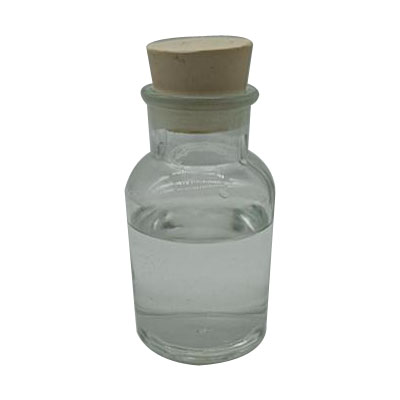What Are Food Additives and Why Are They Used in Our Food?
2024-12-12
Food additives are an essential component of modern food production, yet they often raise questions and concerns among consumers. From enhancing flavor and texture to prolonging shelf life and improving nutritional content, food additives play many roles in the foods we eat every day. But what exactly are food additives, and why are they so commonly used in the food industry?
In this blog, we’ll explore what food additives are, the different types available, their purposes, and some of the debates surrounding their use.
What Are Food Additives?
Food additives are substances added to food products to preserve or enhance their flavor, appearance, texture, or nutritional value. These substances may occur naturally, but most are synthetically produced. Food additives can be found in nearly every category of food, from snacks and beverages to processed meats, baked goods, and even baby food.
The use of food additives allows manufacturers to improve the quality, safety, and convenience of food products. They help maintain the freshness and extend the shelf life of food, reduce the risk of contamination, and enable mass production of consistent products. While many additives have been used for centuries (such as salt, sugar, and vinegar), modern food additives are often more specialized and diverse.
Why Are Food Additives Used?
1. Preservation and Shelf Life
One of the most common reasons food additives are used is to extend the shelf life of products. Many food additives act as preservatives, preventing the growth of bacteria, mold, and yeasts that can spoil food. Common preservatives like sodium benzoate, potassium sorbate, and calcium propionate are used to keep food fresh for longer, especially in processed and packaged foods.
Without preservatives, many foods would need to be consumed quickly or stored under very specific conditions, leading to more food waste.
2. Flavor Enhancement
Flavor additives are used to enhance or modify the taste of food. This can include sweeteners, spices, and flavor enhancers like monosodium glutamate (MSG), which intensify the savory taste of foods. Artificial sweeteners, such as aspartame or sucralose, are often used in sugar-free products to provide sweetness without adding calories.
Flavor additives help to create consistent, appealing tastes in mass-produced foods, ensuring that products taste the same from batch to batch.
3. Improving Texture and Appearance
Food additives are frequently used to improve the texture and appearance of food. For example, emulsifiers like lecithin help mix oil and water in products like mayonnaise or salad dressings, while stabilizers prevent the separation of ingredients. Thickeners like guar gum and cornstarch improve the consistency of sauces and soups.
Colors are also added to foods to make them look more appetizing. Artificial colors such as Red 40 or Yellow 5 are commonly used in candies, beverages, and processed foods to make them more visually appealing.
4. Nutritional Enhancement
Certain food additives are added for their nutritional benefits. Vitamins and minerals, like vitamin D or calcium, are often added to dairy products or breakfast cereals to boost their nutritional content. This is particularly common in fortified foods, where nutrients are added to help prevent deficiencies in the general population.
In addition to vitamins and minerals, fiber or other dietary supplements may be added to foods to enhance their health benefits, such as in granola bars or breakfast drinks.
5. Functional Benefits in Food Processing
Some food additives are used for technical or functional purposes during food processing. For instance, leavening agents like baking soda help baked goods rise, while acidulants control the pH level of food, influencing its texture and flavor. Anti-caking agents prevent powdered foods like salt or powdered sugar from clumping, and foam stabilizers are used in products like whipped cream or beer.
Types of Food Additives
Food additives can be classified into several categories based on their function:
1. Preservatives – These chemicals help prevent spoilage and extend the shelf life of food. Examples include sodium nitrate in cured meats and sulfur dioxide in dried fruits.
2. Sweeteners – These are used to enhance or replace sugar in foods. Examples include high fructose corn syrup (HFCS), aspartame, and stevia.
3. Flavor Enhancers – These additives are designed to enhance the taste of food. Monosodium glutamate (MSG) is one of the most well-known flavor enhancers.
4. Coloring Agents – Artificial or natural colors are used to make food look more attractive. Examples include synthetic dyes like Red 40 and natural options like beet juice powder.
5. Thickeners and Stabilizers – These additives give food its desired texture and consistency. Examples include pectin in jams and carrageenan in dairy products.
6. Antioxidants – These prevent food from oxidizing, which can cause rancidity or spoilage. Common antioxidants include vitamin E and BHA (butylated hydroxyanisole).
7. Acidity Regulators – These help maintain the pH of food. Citric acid, for example, is commonly used in soft drinks and canned vegetables.
8. Anti-caking Agents – These additives prevent clumping in powders. Talc and silicon dioxide are examples used in powdered food products.
Are Food Additives Safe?
The safety of food additives is a common concern among consumers. In many countries, food additives are regulated by governmental agencies such as the U.S. Food and Drug Administration (FDA) or the European Food Safety Authority (EFSA). Before a food additive is approved for use, it undergoes extensive testing to determine its safety in the amounts typically used in food products.
However, some food additives have been linked to health issues or allergic reactions in certain individuals. For example, some artificial colorings, such as Yellow 5, have been associated with hyperactivity in children, and MSG has been criticized for causing headaches in sensitive people (though scientific studies generally show no harmful effects at normal consumption levels).
In addition, there is ongoing debate about the long-term effects of consuming processed foods with numerous additives. As a result, many people choose to minimize their intake of highly processed foods and opt for organic or whole foods with fewer additives.
Natural Alternatives to Synthetic Additives
As concerns over synthetic food additives grow, there has been a rising demand for more natural alternatives. For example, preservatives like salt, vinegar, and rosemary extract are being used as natural alternatives to synthetic chemicals in food preservation. Natural sweeteners like honey or stevia are replacing artificial sweeteners in some products, and colorants like beet juice or turmeric are being used in place of artificial dyes.
Consumers are increasingly looking for foods labeled "clean" or "organic," which typically have fewer synthetic additives. This shift has led to more innovation in the food industry as manufacturers seek out natural alternatives without sacrificing the quality, taste, or safety of their products.
Conclusion: Are Food Additives Necessary?
Food additives are integral to modern food production, offering benefits such as improved safety, taste, texture, and nutritional content. While many additives are safe and serve important functions, it's important for consumers to stay informed about the types of additives in their food and their potential effects on health. By understanding the role of food additives and being mindful of what’s in the foods we eat, we can make more informed choices about the products we purchase.
Ultimately, the key to a balanced diet lies in moderation. While additives can enhance our food experience, whole, minimally processed foods are always a great choice for those seeking a more natural approach to nutrition.



